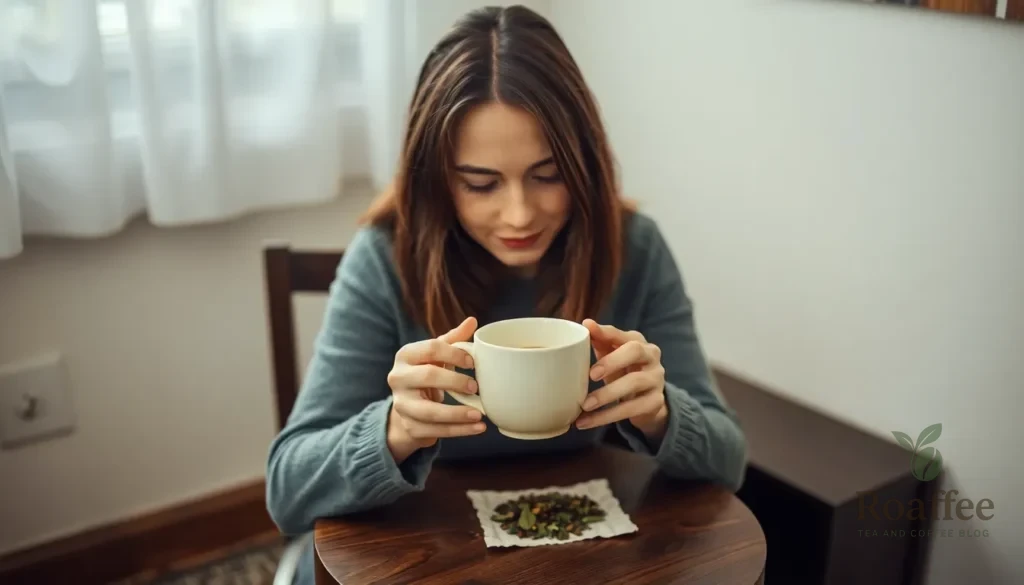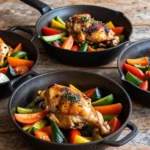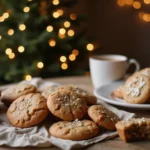We’ve all been fascinated by the mystical art of tea leaf reading at some point in our lives. This ancient practice of tasseography has captivated people for centuries, turning an ordinary cup of tea into a window of insight and self-reflection. Whether you’re curious about divination or simply want to add a touch of magic to your afternoon tea ritual, learning to read tea leaves opens up a industry of wonder.
The beauty of tea leaf reading lies in its simplicity and accessibility. You don’t need expensive equipment or years of training – just loose leaf tea, a light-colored cup, and an open mind. We’ll guide you through the traditional methods that have been passed down through generations, from preparing your cup to interpreting the symbolic patterns that emerge.
Ready to unlock the secrets hidden in your teacup? Let’s jump into this enchanting practice that transforms every sip into a potential revelation about your past, present, and future.
What You Need to Get Started
The beauty of tea leaf reading lies in its simplicity and accessibility. We need only a few basic items to begin our journey into this ancient divination practice.
Essential Tea Reading Supplies
Our tea reading toolkit requires minimal investment yet delivers maximum mystical potential. We gather these fundamental items to create our sacred reading space:
- Light-colored teacup and saucer – Essential for viewing leaf patterns clearly
- Loose leaf tea – The foundation of our divination practice
- Hot water – For brewing our mystical tea
- Small spoon or stirrer – To mix and distribute the leaves
- Clean cloth or napkin – For handling wet cups and cleanup
- Quiet space – Free from distractions for focused reading
- Open mind – The most important tool for interpretation
We recommend starting with these basic supplies before investing in specialized equipment. Many experienced readers prefer simple tools that allow the tea leaves to speak without interference.
Choosing the Right Tea Cup
Our cup selection significantly impacts the quality of our tea leaf readings. We look for exact characteristics that enhance pattern visibility and symbolic interpretation.
The ideal tea reading cup features a wide mouth and shallow bowl shape. We avoid narrow or deep cups that hide leaf formations from our view. Light-colored interiors work best because they create contrast against dark tea leaves.
Cup Color Preferences:
| Color | Reading Quality | Best For |
|---|---|---|
| White | Excellent | Beginners and detailed readings |
| Light cream | Very good | Traditional practice |
| Pale yellow | Good | Warm energy readings |
| Light blue | Good | Emotional interpretations |
We choose cups without interior patterns or designs that might interfere with leaf interpretation. Plain surfaces allow us to focus entirely on the natural formations created by the tea leaves.
The cup handle should feel comfortable in our dominant hand. We hold the cup frequently during the reading process so ergonomic design matters for extended sessions.
Tea Selection for Divination
Our tea choice influences both the flavor of our reading experience and the clarity of leaf patterns. We select teas that create distinct formations while providing pleasant drinking experiences.
Black teas serve as our go-to choice for tea leaf reading. Earl Grey creates beautiful scattered patterns while English Breakfast produces bold concentrated formations. We find these teas leave substantial residue perfect for interpretation.
Green teas offer lighter patterns that work well for delicate readings. Sencha and jasmine green tea create fine detailed formations that reveal subtle messages. We use these teas when seeking gentle guidance rather than dramatic revelations.
Herbal teas provide unique reading experiences though they require different interpretation approaches. Chamomile flowers create distinctive patterns while loose peppermint leaves form interesting geometric shapes. We experiment with various herbal blends to discover our personal preferences.
We avoid tea bags entirely since they contain dust and fannings rather than whole leaves. Loose leaf teas create the distinct patterns we need for accurate readings. We also skip flavored teas with artificial additives that might interfere with natural leaf behavior.
The freshness of our tea affects reading quality significantly. We store loose leaf teas in airtight containers away from light and moisture to preserve their divination properties.
Preparing Your Tea Reading Setup
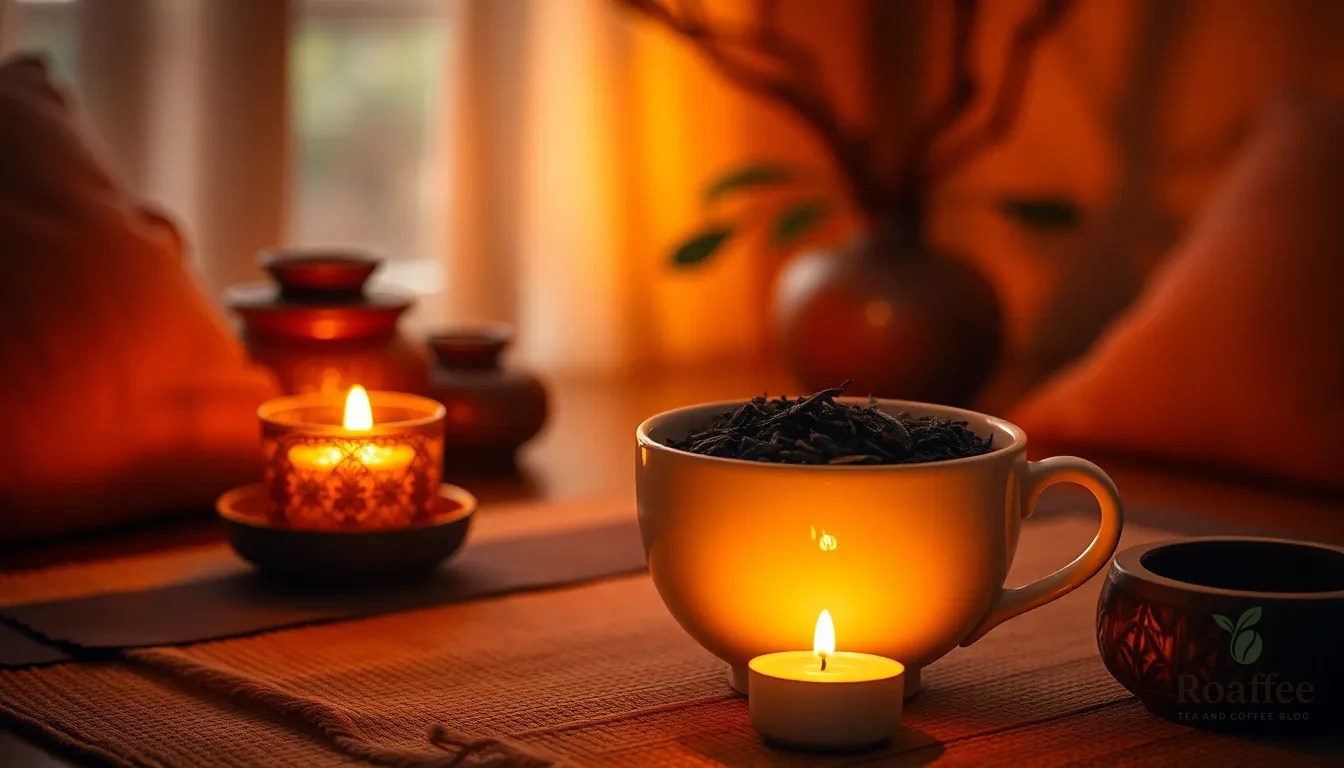
Once we have gathered our essential supplies, we need to create the optimal conditions for accurate tea leaf reading. The success of our tasseography practice depends heavily on proper preparation and establishing the right atmosphere for interpretation.
Creating the Right Environment
Setting up our reading space requires careful attention to atmosphere and comfort. We should choose a quiet comfortable space that remains free from distractions to help us focus our minds effectively. The environment plays a crucial role in our ability to connect with the tea leaves and interpret their messages clearly.
Lighting creates a important impact on our reading experience. We recommend dimming harsh overhead lights and considering soft background music or candles to establish a calming atmosphere. This gentle lighting helps us see the leaf patterns more clearly while promoting a meditative state of mind.
Before we begin brewing our tea, we need to set a clear intention for our reading. Focusing on a exact question or concern guides our interpretation process and helps us connect more deeply with the symbols that appear. This mental preparation transforms our tea reading from a casual activity into a meaningful practice of self reflection.
Brewing the Perfect Cup
Our brewing technique directly affects the quality of leaf patterns we can interpret. We place about a teaspoon of loose tea leaves directly into our wide rounded cup rather than using any straining devices. The leaves must remain free to move and settle naturally during the drinking process.
Water temperature and steeping time require precise attention for optimal results. We pour boiling water over the leaves and allow them to steep for 3 to 4 minutes without adding milk or sweeteners. These additions alter leaf movement and visibility, making accurate interpretation nearly impossible.
The drinking process itself becomes part of our ritual preparation. We stir gently before drinking to distribute the leaves throughout the cup, then sip slowly and mindfully until about a teaspoon of liquid remains. This remaining liquid and the settled leaves create the foundation for our reading, so we must leave enough moisture to perform the swirling motion that follows.
Basic Tea Leaf Reading Techniques
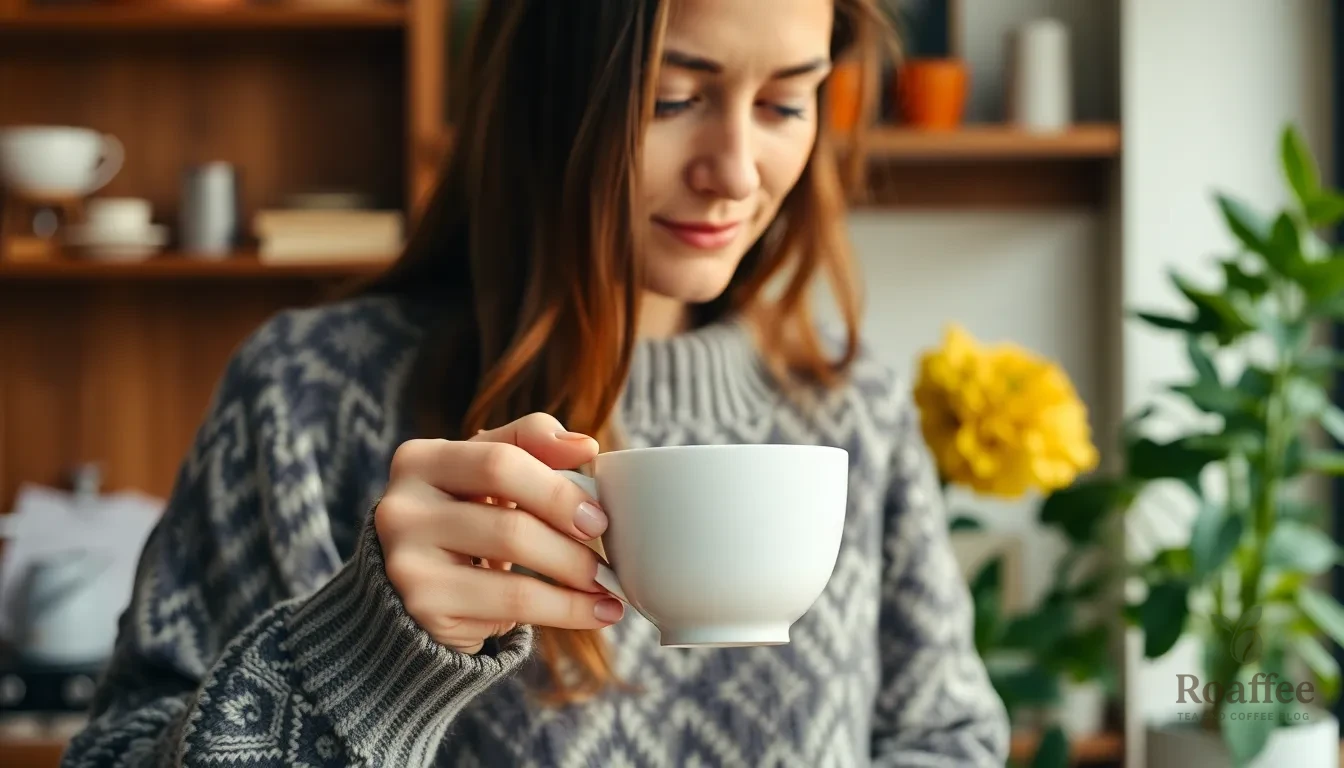
After we’ve finished sipping our tea and left the dregs in the bottom of our cup, we begin the sacred ritual of reading the leaves. The art of tasseography requires us to follow exact techniques that have been passed down through generations of tea leaf readers.
Understanding Symbols and Patterns
We start by swirling the remaining tea and leaves three times in a clockwise direction while focusing on our question or general intent. This movement helps distribute the leaves around the cup in meaningful patterns. After swirling, we flip the cup upside down on a saucer and let it drain for one minute, then turn it three times clockwise before beginning our interpretation.
Our eyes should look for shapes formed by the leaves themselves or the spaces between them. These patterns may appear abstract at first, but we trust our intuition and first impressions, similar to seeing images in clouds. Common symbols carry exact meanings that we can learn to recognize. A clover shape indicates luck coming our way, while a dog can represent either friends or enemies depending on its placement within the cup.
The beauty of tea leaf reading lies in how symbols interact with one another. We must consider nearby symbols that can change or deepen the meanings we interpret. For instance, when we spot a hand symbol, its significance depends entirely on what it points toward or touches in the surrounding area.
Reading Different Areas of the Cup
We divide our teacup into distinct sections that correspond to different aspects of our lives and timeframes. The area near the handle represents our present circumstances, personal matters, and home life. This region holds the most immediate relevance to our current situation.
Moving toward the rim of the cup, we encounter symbols related to past events or the very near future. The bottom of the cup reveals distant future possibilities or unconscious influences that may shape our path ahead.
Some readers prefer to divide the cup using different methods. We can interpret the left side as indicating negative outcomes while the right side suggests positive developments. Alternatively, we might read the left side as “no” answers and the right side as “yes” responses to our questions.
When we choose to read horizontally, the top half of the cup represents future events while the bottom half connects to past experiences. This method provides a clear timeline for our interpretations.
Interpreting Cup Positions
The proximity of shapes to the handle serves as our primary timing indicator. Symbols close to the handle relate to present circumstances, while those near the rim connect to past events, and patterns at the bottom point toward future possibilities.
We begin our reading near the handle, which represents us as the querent, then move clockwise around the cup in a spiral pattern from rim to bottom. This systematic approach ensures we don’t miss any important symbols or their relationships to one another.
The turning and swirling rituals we perform serve a crucial purpose beyond tradition. These movements help spread the leaves so that meaningful symbols can form and become visible for our interpretation. Our focused mindset during these rituals enhances our ability to read the patterns accurately.
Distance from the handle also indicates the strength of influence each symbol holds. Symbols positioned closer to the handle carry more immediate impact on our lives, while those farther away represent influences that may take longer to manifest or have less direct effect on our situation.
Step-by-Step Tea Leaf Reading Process
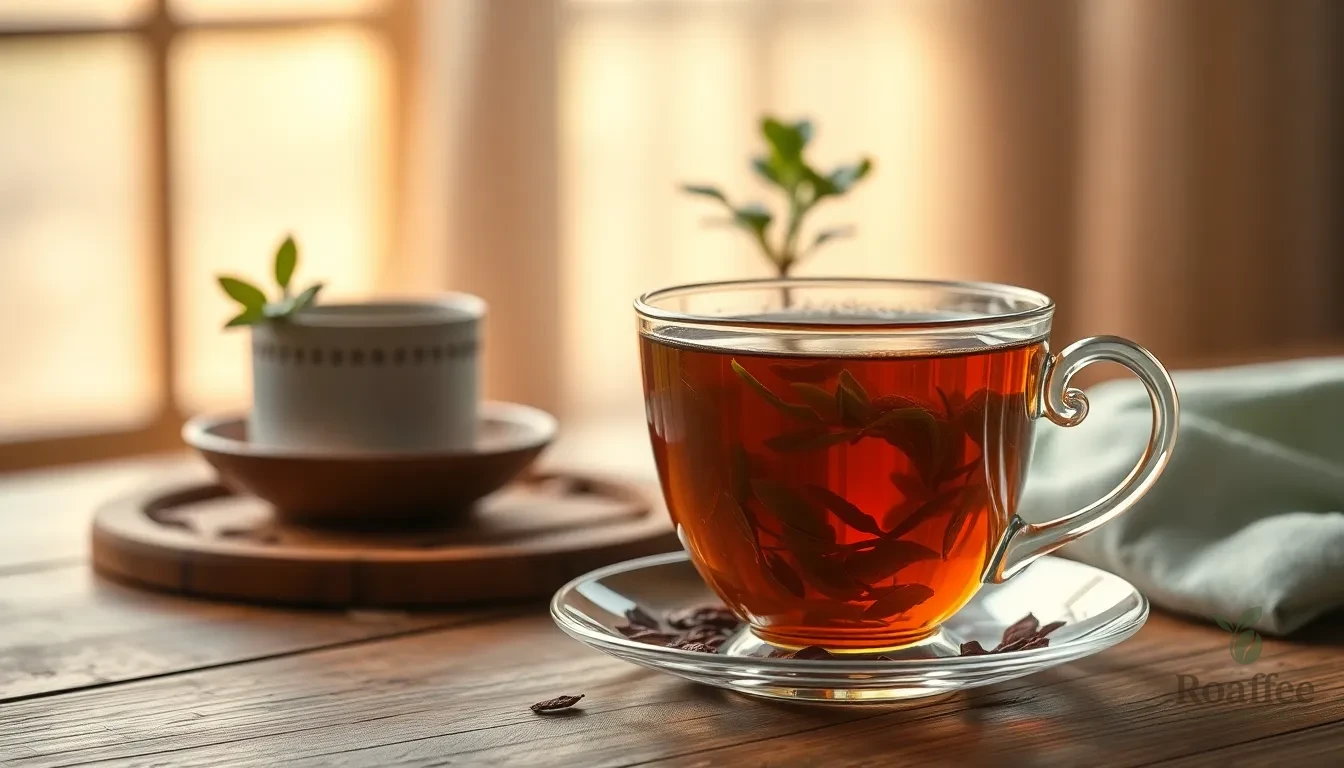
Now that we’ve prepared our tea and established the proper environment, we can begin the actual reading process. This systematic approach ensures we capture the most accurate insights from our tea leaves.
Drinking the Tea Properly
We begin by holding our teacup with the handle pointing toward our heart while keeping a clear question or intention in mind. As we sip the tea slowly, we should focus our thoughts on the exact area of life we wish to explore or simply remain open to general guidance. The key is to drink mindfully while avoiding consuming the tea leaves themselves.
We need to leave approximately a tablespoon of liquid at the bottom of the cup along with the tea leaves. This remaining liquid serves a crucial purpose in the swirling process that follows. Once we’ve finished drinking, we hold the cup by its handle and swirl the remaining liquid and leaves clockwise three times with deliberate intention.
After completing the swirling motion, we quickly invert the cup onto the saucer to drain all remaining liquid completely. Some practitioners prefer to spin the inverted cup three additional times clockwise while it rests on the saucer. This draining process allows the leaves to settle into their final positions for reading.
Examining the Remaining Leaves
We turn the cup right side up and begin our examination by viewing the leaf patterns from multiple angles. The leaves create shapes and symbols through their placement and the spaces between them. We should trust our intuition to identify these images rather than forcing interpretations.
The position of symbols within our cup corresponds to exact timing and life areas. Leaves near the handle relate to our personal life, home, and close family relationships. Symbols appearing on the rim indicate immediate future events occurring within the next few days.
Patterns in the middle section of the cup represent the near future spanning several weeks. Meanwhile, leaves settled at the bottom reveal longer term influences extending approximately one month into the future. We examine each area systematically to build a complete picture of our reading.
Identifying Key Symbols
Tea leaves naturally form recognizable shapes resembling objects, animals, letters, and abstract symbols. Each symbol carries traditional meanings drawn from cultural and symbolic references. A heart shape typically indicates love or happiness, while a bird might symbolize incoming news or travel opportunities.
Circular formations often represent completion or cycles, and we should note how these symbols interact with each other. The relationships between symbols can modify their individual meanings significantly. For instance, a heart near a bird might suggest news about love or romantic travel.
We rely on both traditional symbol dictionaries and our personal intuition when interpreting these formations. Common symbols include:
| Symbol | Traditional Meaning |
|---|---|
| Heart | Love, happiness, emotional fulfillment |
| Bird | News, messages, travel |
| Circle | Completion, cycles, wholeness |
| Cross | Challenges, spiritual matters |
| Tree | Growth, stability, family connections |
| Snake | Transformation, hidden knowledge |
The interpretation process combines learned symbolic meanings with our intuitive responses to create a meaningful reading that addresses our original question or intention.
Common Tea Leaf Symbols and Their Meanings
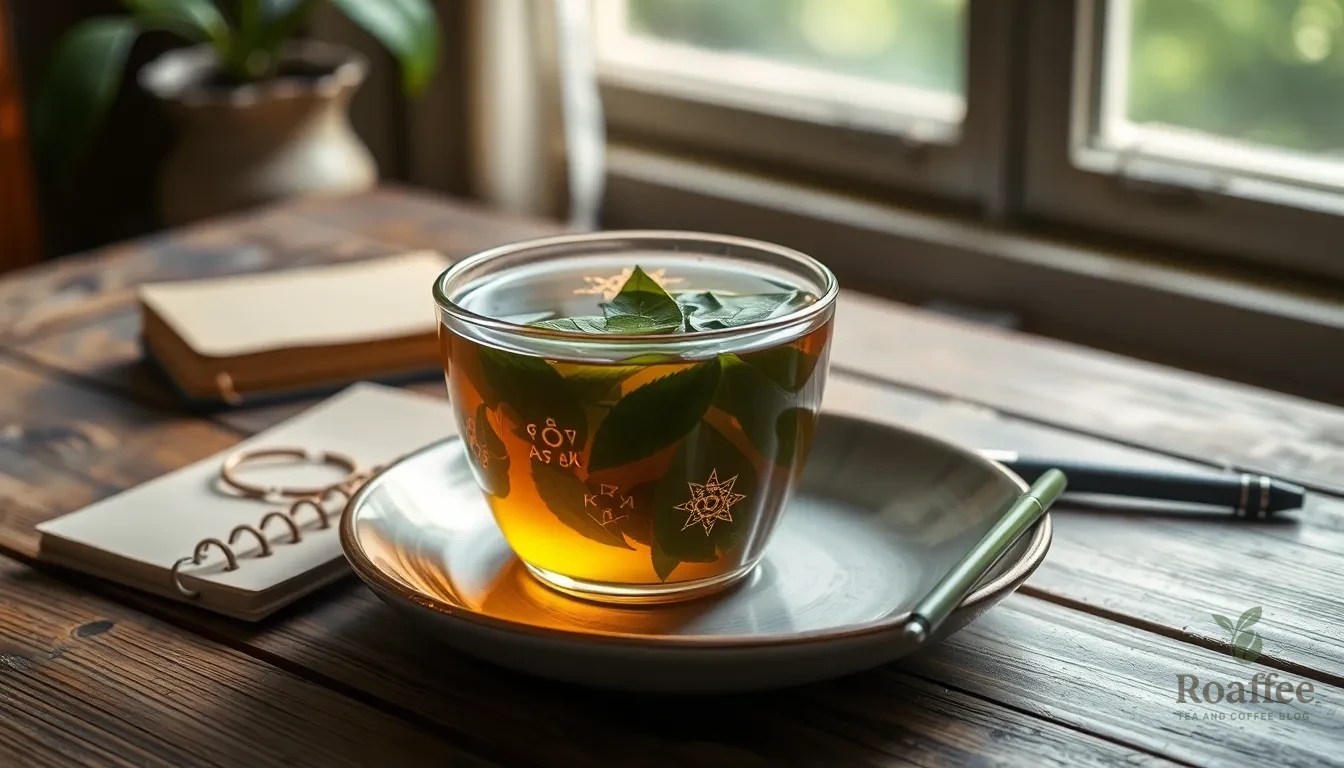
Understanding the symbols that appear in our tea cups forms the foundation of accurate tea leaf reading. Each symbol carries traditional meanings that we can interpret through both established knowledge and personal intuition.
Animals and Creatures
Animals and creatures represent some of the most powerful symbols we encounter in tea leaf reading. Birds typically signify incoming news or important messages making their way to us. The positioning of bird symbols within our cup helps determine the timing of these communications.
Cats present fascinating dual meanings in our readings. These feline symbols can indicate mystery and hidden knowledge or bring messages of luck and independence. Fish swimming through our tea leaves traditionally represent abundance and prosperity flowing into our lives. We often interpret these aquatic symbols as signs of financial gain or emotional fulfillment.
Snakes demand careful attention in our readings. These serpentine symbols serve as warnings to exercise caution in upcoming situations. But, snakes also symbolize transformation and healing energy moving through our lives. The context surrounding the snake symbol helps us determine whether it represents danger or positive change.
Objects and Shapes
Objects and shapes provide concrete guidance for our daily lives and future decisions. Hearts appearing in our cups universally symbolize love and romantic connections. We interpret these symbols as indicators of existing relationships strengthening or new love entering our lives.
Anchors represent stability and hope anchoring us during turbulent times. These symbols suggest we possess the inner strength needed to weather current challenges. Keys unlock answers and opportunities that await our discovery. We view these symbols as signs that answers to our problems lie within reach.
Crosses carry dual significance in our readings. These symbols can represent burdens we currently carry or spiritual faith supporting us through difficulties. The surrounding symbols help us determine whether the cross indicates challenges or divine protection.
Numbers and Letters
Numbers and letters provide exact details that enhance our tea leaf interpretations. Letters resembling initials often connect to important people entering or leaving our lives. We examine these alphabetic symbols for connections to names important to our current questions.
Numbers appearing in our cups frequently relate to important dates or time periods. These numeric symbols can indicate when predicted events might occur or highlight important ages or anniversaries. We pay special attention to numbers that hold personal meaning for us.
| Symbol Type | Common Examples | Traditional Meanings |
|---|---|---|
| Animals | Birds, cats, fish, snakes | News, mystery, abundance, transformation |
| Objects | Hearts, anchors, keys, crosses | Love, stability, answers, faith or burdens |
| Numbers/Letters | Initials, dates, ages | Personal connections, timing, important periods |
Recording these symbols in our tea reading journal helps us track patterns and refine our interpretive skills over time. Each symbol gains deeper meaning through our personal experience and growing intuition.
Advanced Reading Techniques
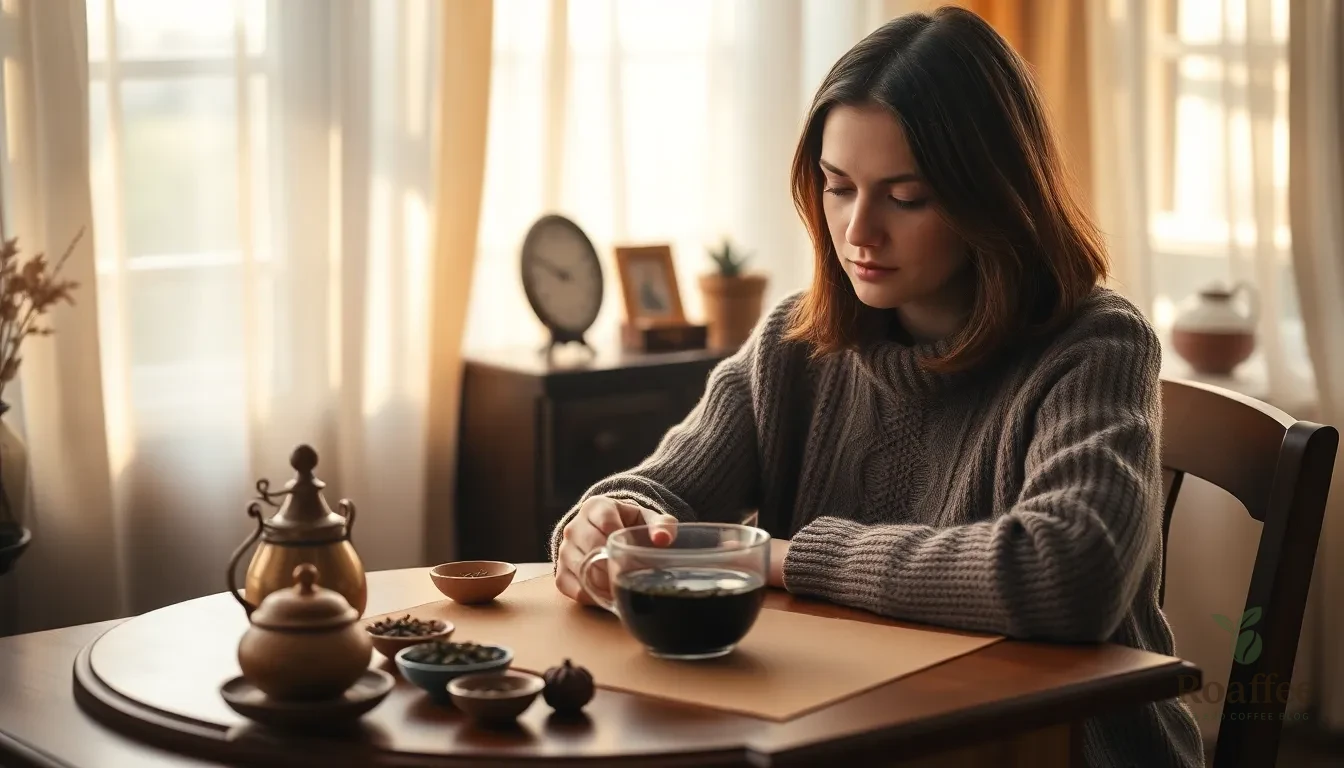
Once we have mastered the basics of tea leaf reading, we can enhance our interpretations by incorporating advanced techniques that deepen our understanding of the symbols and their connections. These sophisticated methods allow us to provide more accurate and nuanced readings.
Timing Your Predictions
The position of symbols within our teacup serves as a crucial timing indicator for predicted events. We read the cup chronologically from the rim downward, with each area representing a exact timeframe for manifestation.
The rim of our cup reveals events occurring in the immediate future, typically within the next few days. Moving downward into the middle section, we encounter symbols that represent occurrences approximately two weeks away. The bottom portion of the cup holds the most distant predictions, indicating events that may unfold up to one month ahead.
We assess timing by carefully noting where each symbol appears in relation to these zones. A bird near the rim suggests news arriving very soon, while the same symbol at the bottom indicates delayed communication. This systematic approach to timing helps us provide more precise predictions about when events might occur.
Connecting Multiple Symbols
Individual symbols gain deeper meaning when we analyze their relationships and interactions with neighboring patterns. We look for groupings of symbols that work together to form a comprehensive narrative about present circumstances and future possibilities.
The combination of symbols creates layered interpretations that add complexity and accuracy to our readings. A heart symbol appearing near a road might indicate a romantic journey, while the same heart positioned next to a mountain could suggest love requiring patience and perseverance.
We examine how symbols complement or contrast with each other to understand the full scope of the message. Multiple symbols can reinforce a single theme or reveal different aspects of the same situation. This interconnected approach transforms scattered leaf patterns into coherent stories that provide meaningful guidance.
Reading for Others vs. Self-Reading
The techniques we use vary significantly depending on whether we read for ourselves or others, requiring different approaches and mindsets for optimal results.
| Aspect | Reading for Others | Self-Reading |
|---|---|---|
| Intuition Focus | Empathy and external perspective | Internal intuition and personal reflection |
| Question Framing | Often exact, client-driven questions | Personalized, self-exploratory |
| Symbol Interpretation | May require more caution with sensitive info | More direct, trusting personal insights |
| Emotional Detachment | Required to remain objective | More subjective and introspective |
When reading for others, we maintain emotional distance to provide objective interpretations while exercising empathy to understand their unique circumstances. We frame our interpretations carefully, especially when dealing with sensitive topics or challenging predictions.
Self-reading requires us to trust our internal intuition more deeply and allows for greater personal connection with the symbols. We can explore our own questions more intimately and interpret symbols based on our personal associations and experiences. This introspective approach often yields more direct insights because we understand our own context and emotional industry.
Troubleshooting Common Reading Challenges
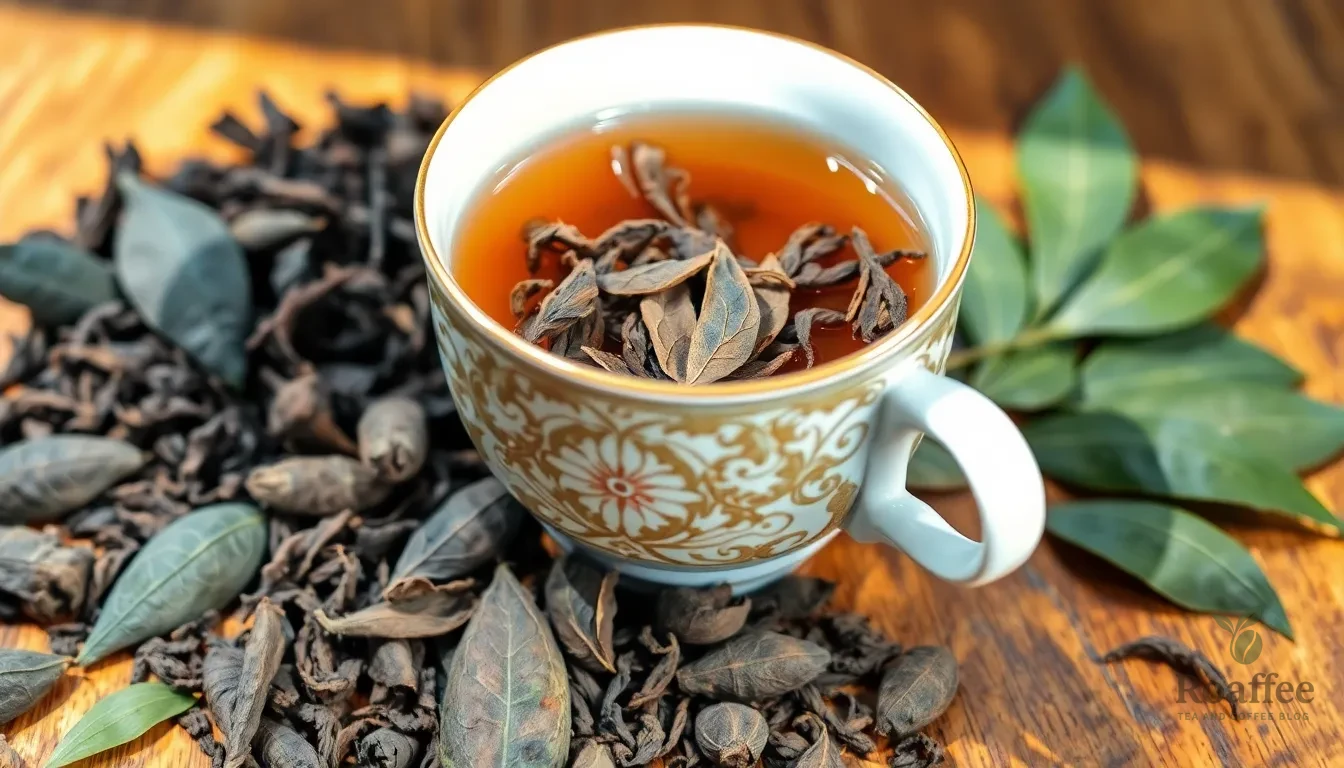
Even experienced tea leaf readers encounter obstacles that can make interpretations difficult or unclear. We’ll address the most common challenges and provide practical answers to enhance your reading accuracy.
When Leaves Don’t Form Clear Patterns
We often find that beginners struggle to identify meaningful symbols when leaves appear scattered or abstract. This challenge requires patience and practice as our eyes learn to recognize patterns in seemingly random arrangements. Swirling the cup gently clockwise helps distribute leaves more evenly across the surface, creating better defined shapes that are easier to interpret.
Using larger leaf varieties significantly improves pattern clarity since bigger leaves form more distinct symbols. Small or uniform leaves tend to create blob-like formations that lack the definition needed for accurate readings. We recommend switching to whole leaf teas like Ceylon or Assam when standard grades produce unclear results.
The key lies in developing your pattern recognition skills through consistent practice. Start by looking for simple geometric shapes like circles, lines, or triangles before attempting to identify complex symbols. We suggest spending extra time examining the cup from different angles, as rotating your perspective often reveals hidden patterns that weren’t immediately visible.
Dealing with Too Many or Too Few Leaves
Overcrowded leaf patterns present one of the most frustrating challenges in tea reading. When too many leaves cluster together, individual symbols become indistinguishable and create confusion rather than clarity. We solve this problem by reducing the amount of loose tea used in each cup, typically starting with three-quarters of a teaspoon instead of a full teaspoon.
Choosing teas with larger, more separated leaves prevents overcrowding while maintaining sufficient material for meaningful readings. Earl Grey and English Breakfast teas work particularly well for this purpose due to their leaf size and separation characteristics.
The opposite problem occurs when too few leaves remain after drinking, leaving sparse patterns that offer limited interpretive material. We address this by using slightly more loose tea initially or ensuring we leave adequate liquid in the cup before swirling. A tablespoon of remaining tea provides the perfect amount of moisture to create comprehensive patterns without overwhelming the reading space.
| Leaf Distribution Issues | Solution | Tea Amount |
|---|---|---|
| Too many leaves | Reduce tea quantity | 3/4 teaspoon |
| Too few leaves | Increase tea quantity | 1 1/4 teaspoon |
| Optimal reading | Standard amount | 1 teaspoon |
Adjusting your tea quantity based on the leaf size and your drinking habits ensures consistent results across different reading sessions.
Conclusion
Tea leaf reading opens a fascinating doorway into an ancient practice that combines intuition with tradition. We’ve explored how this accessible art form requires only simple tools and an open mind to begin your journey into tasseography.
The patterns that emerge in your teacup aren’t just random arrangements – they’re opportunities for reflection and insight. Whether you’re seeking personal guidance or connecting with others through readings the symbols speak to universal human experiences.
Remember that mastery comes through practice. Each cup you read strengthens your interpretive skills and deepens your connection to this mystical tradition. Start with simple sessions and gradually build your confidence as you develop your unique reading style.
Your teacup holds more than just the remnants of a warm beverage – it contains possibilities waiting to be discovered. Trust your instincts embrace the process and let the leaves guide you toward greater understanding.
Frequently Asked Questions
What is tea leaf reading and can anyone learn it?
Tea leaf reading, or tasseography, is an ancient divination practice that interprets patterns formed by tea leaves in a cup. Yes, anyone can learn this mystical art! You don’t need expensive tools or extensive training – just loose leaf tea, a light-colored cup, and an open mind to get started.
What supplies do I need for tea leaf reading?
You’ll need a light-colored teacup (preferably wide-mouthed and shallow), loose leaf tea, hot water, a small spoon, a clean cloth, and a quiet space. The light-colored interior of the cup is essential for clearly seeing the leaf patterns that form during the reading.
What type of tea is best for tea leaf reading?
Black teas like Earl Grey and English Breakfast work best for bold, clear patterns. Green teas like Sencha and jasmine are suitable for more delicate readings. Avoid tea bags and flavored teas as they can interfere with pattern formation. Always use fresh, properly stored loose leaf teas.
How do I prepare the tea for reading?
Use about a teaspoon of loose tea leaves directly in the cup with boiling water. Steep for 3-4 minutes without any additives like milk or sugar, as these interfere with leaf patterns. Drink mindfully while holding the cup with the handle toward your heart, leaving about a tablespoon of liquid.
How do I interpret the tea leaf patterns?
After drinking, swirl the remaining tea and leaves clockwise, then flip the cup upside down. Look for symbols like animals, objects, or shapes. The area near the handle represents present circumstances, the rim shows near future events, and the bottom reveals distant future influences.
What do common tea leaf symbols mean?
Birds represent incoming news, hearts symbolize love, and clovers indicate luck. Dogs can represent friends or enemies depending on context. Numbers and letters may reference dates or initials. The meaning of symbols depends on their relationships with other patterns and their position in the cup.
How can I improve my tea leaf reading skills?
Keep a tea reading journal to track symbols and patterns over time. Practice regularly with different tea types and pay attention to how symbols relate to each other. Start with simple readings and gradually work toward more complex interpretations as your pattern recognition skills develop.
What’s the difference between reading for myself versus others?
Self-reading allows for deeper personal reflection and trusting your intuition. When reading for others, maintain emotional detachment and empathy for objective interpretations. Reading for others requires different techniques and a more neutral mindset to provide accurate guidance.
What should I do if the tea leaf patterns are unclear?
Adjust the amount of loose tea you use – too much creates overcrowded patterns, while too little makes them hard to see. Try using larger leaf varieties for better clarity. Ensure proper steeping time and create optimal leaf distribution by gentle swirling before inverting the cup.
How do I determine timing in tea leaf readings?
Symbols closer to the handle represent immediate influences, while those farther away indicate longer-term effects. The rim shows immediate future events, the middle represents medium-term predictions, and the bottom reveals distant future influences. Use these positions to create a timeline for your interpretations.

